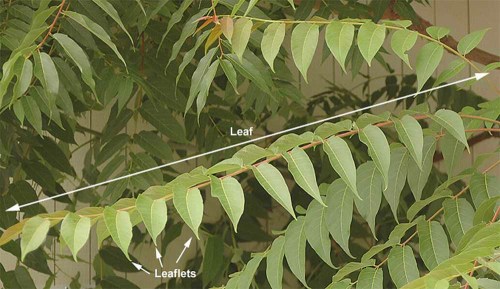Invasive tree of heaven more like a tree of hell for some
Published 3:00 pm Thursday, July 22, 2021

- {photoSource}Capital Press{/photoSource}
PENDLETON — In the late 1700s, the tree of heaven plant was introduced to the U.S. by horticulturists who sought it out as a unique ornamental tree.
While the tree may be handsome and provide shade in the summer heat, it also is highly invasive in urban, agricultural and forested regions and can create environmental impacts by blocking out other plants, according to the Oregon Department of Agriculture Plant Pest Risk Assessment.
Trending
“It’s an alley cat tree; it can stand pollution, and drought. It’s quite successful in all kinds of environments,” said Patrick Breen, an emeritus appointment at Oregon State University.
Though it can be found in nearly every state, it is mainly seen in Oregon and neighboring states, and in Connecticut, Massachusetts and New Hampshire, where it was originally planted as a ornamental tree.
In Oregon, it is most commonly found from Hood River County to Umatilla County near the Columbia River and along fence rows and in forest openings, according to OSU.
A single tree of heaven, otherwise known as Ailanthus altissima, has male and female trees. Breen said the female trees can produce up to 300,000 seeds yearly that are distributed by wind and water.
“In other words, it’s a seed producer and it can throw those seeds 330 feet. They’re fairly heavy seeds, and they’re not small,” Breen said.
The tree gets its name from its height. It outgrows native trees, dominating the sunlight. It can grow as tall as 80 feet but usually averages 25-50 feet tall, depending on the location, according to ODA.
Trending
Tree of heaven can be identified by its compound leaves on which lots of quill-shaped leaflets are attached. The bark is smooth and brownish-green. If the bark is broken, it releases a foul smell, almost like a soured peanut butter odor.
Tree of heaven also can prevent other vegetation from growing around it by releasing chemicals through its roots.
The plants also also primary hosts for the spotted lanternfly, an invasive insect that can kill other trees, grapevines, apple trees, hops vines and other species by leaving a sticky sap on their base and making it more susceptible to other plant diseases and insects.
The trees have impacts on the timber industry as well. They can outgrow native trees in some regions, but they are worthless as timber because they have no structural or burn value.
As they have an extensive root system and the ability to resprout rapidly, the tree of heaven is challenging to control, said OSU.
Cutting or mowing them is ineffective and can make the situation worse as the tree will respond to cutting by sending up dozens of sprouts and root suckers, further spreading the plant.
Hand pulling young seedlings is possible when the soil is moist, but the entire root system must be removed.









